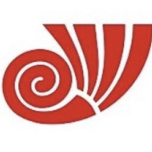Introduction to Chelyabinsk State University
Chelyabinsk State University, referred to as Chelyabinsk University, was founded in 1976 and is located in Chelyabinsk, the capital of Chelyabinsk Oblast, Russia. It is a comprehensive higher education institution integrating education and scientific research.
Overview
Student size: There are about 20,000 students on campus.
Faculty: There is a faculty team consisting of 79 professors and doctors and 291 associate professors and associate doctors.
History
On April 3, 1974, the Soviet Council of Ministers decided to establish Chelyabinsk State University, and it officially opened on October 4, 1976. In 1997, the school established the Natural and Human Research Science Center based on the archaeological laboratory.
School Strength
Teaching Achievements: It offers more than 200 programs including vocational courses, bachelor's degree courses, expert degree courses, master's degree courses, postgraduate (doctoral) degree courses and advanced doctoral degree courses, covering many disciplines such as computer security, radio and electronic technology, information security of automation systems, physical chemistry of processes and materials, biology, microbiology, ecology, public relations, psychology, education, etc., and has trained a large number of professional talents.
Scientific Research Strength: The school has successfully developed more than 30 scientific schools, and 65% of lecturers have scientific degrees. Its scientific research projects have been funded by the European Commission "Tempus", the President of the Russian Federation, the Ministry of Education and Science of the Russian Federation, the Ministry of Education and Science of the Chelyabinsk Region and the Science Foundation. It has achieved remarkable research results in the fields of natural sciences, humanities and social sciences, and has established industry-education cooperation with many enterprises to provide technical support and talent training services for enterprises.
International Cooperation: As a member of the Russian Association of Classical Universities, the Eurasian Association of Universities and the International Association of Universities under the auspices of UNESCO, it has established cooperation with 50 universities in Europe and Asia. The school has established cooperative relations with multiple partner organizations, including universities, research institutes and research centers. The school's Eurasian and Oriental College has established cooperation with more than 20 foreign partner institutions, including Shenyang Normal University, Hebei University of Economics and Business, Liaocheng University, Ehime University, Tashkent Oriental College, etc. .
Institutional nature
Public university.
Educational philosophy
With mutual understanding and respect for human beliefs, thoughts and intentions as the main principles, it supports and encourages students to choose their learning paths, acquire highly professional skills and field knowledge, and is committed to cultivating professionals that meet international education standards.
Key laboratories and disciplines
Key laboratories: The school has quantum topology laboratories, etc. The Natural and Human Research Science Center, established in 1997, is based on the archaeological laboratory. Members conduct joint archaeological and ethnographic surveys and field research every year.
Key disciplines: Computer security, radio and electronic technology, information security of automation systems, physical chemistry of processes and materials, biology, microbiology, ecology, psychology, education, economics and other disciplines are the school's key development disciplines.
Department
The school has 13 colleges and 7 Educational and research institutions, including the School of Biology, the School of Chemistry, the School of Ecology, the School of Economics, the School of Journalism, the School of History and Languages, the School of Eurasia and Oriental Studies, the School of Distance Education, the School of Basic Medical Sciences, the School of Linguistics and Translation, the School of Mathematics, the School of Physics, the School of Psychology and Education, as well as the Institute of Industrial Economics, Business and Management, the Institute of Information Technology, the Institute of International Education, the Institute of Law, the Institute of Career Development and Retraining, etc.
Ranking
Ranked 1st in the 2023 RAEX Ural Federal District University Ranking.
Ranked 401-450 in the 2022 QS Emerging Europe and Central Asia Ranking.
Ranked 46th in the 2023 Webometrics World University Ranking.
Cost
No clear tuition standards for each major were found.
Campus
Teaching facilities: The school has modern teaching buildings, laboratories, libraries and other teaching facilities, providing students with good learning conditions.
Living facilities: There are dormitories, canteens, sports facilities, etc. on campus, providing students with a comfortable living environment.
-
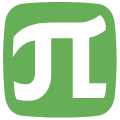
Peter the Great St.Petersburg Polytechnic University
-

Moscow State University M. V. Lomonosov
-
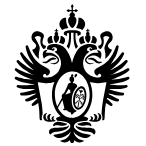
St. Petersburg State University
-
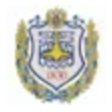
Bauman Moscow State Technical University
-

Tomsk State University
-

Peoples' Friendship University of Russia
-
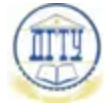
Don State Technical University
-

Moscow Institute of Physics and Technology
-
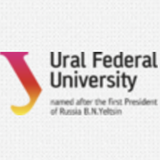
Ural Federal University
-

Kazan Federal University
-

Mesoamerican University
-

Istmo University
-

Mariano Galvez University of Guatemala
-

Regional University of Guatemala
-

Galileo University
-

Francisco Marroquín University
-

Rafael Landívar University
-

University of the Valley of Guatemala
-

University of San Carlos of Guatemala
-

Technological Institute of Tlaxcala Plateau
-

Golfo University
-

Technological University of South Sonora
-

Technological University of Huejotzingo
-

Tizimín Institute of Technology
-

Chilpancingo Institute of Technology

